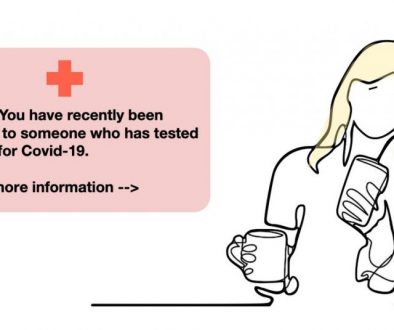Google publishes largest ever high-resolution map of brain connectivity – The Verge
Scientists from Google and the Janelia Research Campus in Virginia have published the largest high-resolution map of brain connectivity in any animal, sharing a 3D model that traces 20 million synapses connecting some 25,000 neurons in the brain of a fruit fly.
The model is a milestone in the field of connectomics, which uses detailed imaging techniques to map the physical pathways of the brain. This map, known as a “connectome,” covers roughly a third of the fruit fly’s brain. To date, only a single organism, the roundworm C. elegans, has had its brain completely mapped in this way.
Connectomics has a mixed reputation in the science world. Advocates argue that it helps link physical parts of the brain to specific behaviors, a key goal in neuroscience. But critics note it’s yet to produce any major breakthroughs, and say that the painstaking work of mapping neurons is a drain on resources that might be better put to use elsewhere.
“The reconstruction is no doubt a technical marvel,” Mark Humphries, a neuroscientist at the University of Nottingham told The Verge. But, he said, it’s also primarily a resource for other scientist to now use. “It will not in itself answer pressing scientific questions; but it might throw up some interesting mysteries.”
The 3D map produced by Google and the FlyEM team at Janelia is certainly a technical achievement, the product of both automated methods and laborious human labor.
The first step in creating the map was to slice sections of fruit fly brain into pieces just 20 microns thick, roughly a third the width of a human hair. Fruit flies are a common subject in connectomics as they have relatively simple brains about the size of a poppy seed but display complex behaviors like courtship dances.
These slices of brain are then imaged by bombarding them with streams of electrons from a scanning electron microscope. The resulting data comprises some 50 trillion 3D pixels, or voxels, which are processed using an algorithm that traces the pathways of each cell.
Despite Google’s algorithmic prowess, it still took substantial human labor to check the software’s work. The company says it took two years and hundreds of thousands of hours for scientists at Janelia to “proofread” the 3D map, verifying the route of each of the 20 million chemical synapses using virtual reality headsets and custom 3D editing software.
And even then, the resulting map only covers a portion of the fruit fly’s brain, known as the hemibrain. In total, a fruit fly’s brain contains 100,000 neurons, while a human brain has roughly 86 billion. That suggests how far we are from creating a full connectome of our own neural pathways.
Joshua Vogelstein, a biomedical engineer and co-founder of the Open Connectome Project, told The Verge that the work would be a boon to scientists. Vogelstein said that in the decade to come, the data provided by such projects would finally start to yield results.
“I believe people were impatient about what [connectomes] would provide,” said Vogelstein. “The amount of time between a good technology being seeded, and doing actual science using that technology is often approximately 15 years. Now it’s 15 years later and we can start doing science.”
Google and the FlyEM team have made the data they collected available for anyone to view and download. The group has also published a pre-print paper describing their methodology, and say they’ll be publishing more papers on their work in the weeks to come.
This content was originally published here.


